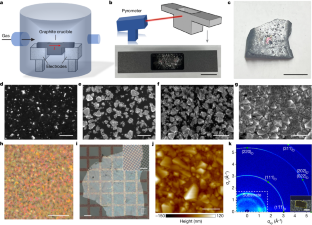2024-04-23 アリゾナ大学
<関連情報>
- https://news.arizona.edu/news/human-activities-have-intense-impact-earths-deep-subsurface-fluid-flow
- https://agupubs.onlinelibrary.wiley.com/doi/10.1029/2024EF004496
人新世における地下深部流体フラックスの加速 Acceleration of Deep Subsurface Fluid Fluxes in the Anthropocene
Grant Ferguson, Lydia R. Bailey, Ji-Hyun Kim, Magdalena R. Osburn, Peter W. Reiners, Henrik Drake, Bradley S. Stevenson, Jennifer C. McIntosh
Earth’s Future Published: 05 April 2024
DOI:https://doi.org/10.1029/2024EF004496

Abstract
The Anthropocene has been framed around humanity’s impact on atmospheric, biologic, and near-surface processes, such as land use and vegetation change, greenhouse gas emissions, and the above-ground hydrologic cycle. Groundwater extraction has lowered water tables in many key aquifers but comparatively little attention has been given to the impacts in the deeper subsurface. Here, we show that fluid fluxes from the extraction and injection of fluids associated with oil and gas production and inflow of water into mines likely exceed background flow rates in deep (>500 m) groundwater systems at a global scale. Projected carbon capture and sequestration (CCS), geothermal energy production, and lithium extraction to facilitate the energy transition will require fluid production rates exceeding current oil and co-produced water extraction. Natural analogs and geochemical modeling indicate that subsurface fluid manipulation in the Anthropocene will likely appear in the rock record. The magnitude and importance of these changes are unclear, due to a lack of understanding of how deep subsurface hydrologic and geochemical cycles and associated microbial life interact with the rest of the Earth system.
Key Points
- Current anthropogenic fluid fluxes in the deep subsurface likely exceed background fluxes
- Anthropogenic fluid fluxes in the deep subsurface are expected to accelerate with the energy transition
- Injection and production of fluids from the deep subsurface is expected to leave a mark on the geologic record
Plain Language Summary
The Anthropocene is often framed in terms of changes in climate, ecosystems and land use. These have been accompanied by changes in the Earth’s water cycle, including depleted groundwater storage due to pumping in many regions. The scale of anthropogenic change in the subsurface at depths beyond typical water wells has received less attention. Fluid flow rates associated with oil and gas production likely exceed natural groundwater flow rates at depths greater than 500 m. Anthropogenic impacts to this deeper zone of the Earth’s subsurface are expected to increase dramatically as we look to store carbon, mine lithium from deep brines and produce geothermal energy as part of the ongoing energy transition.



